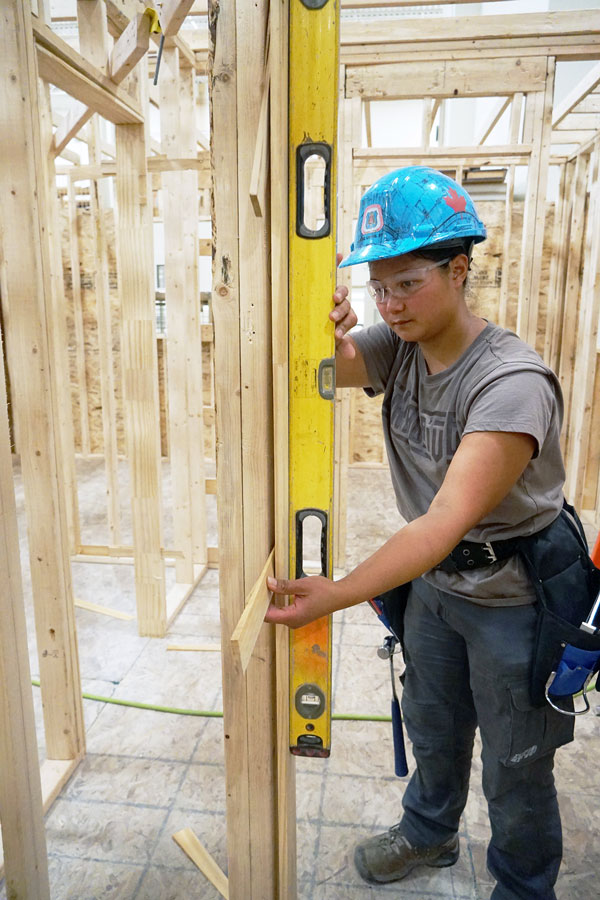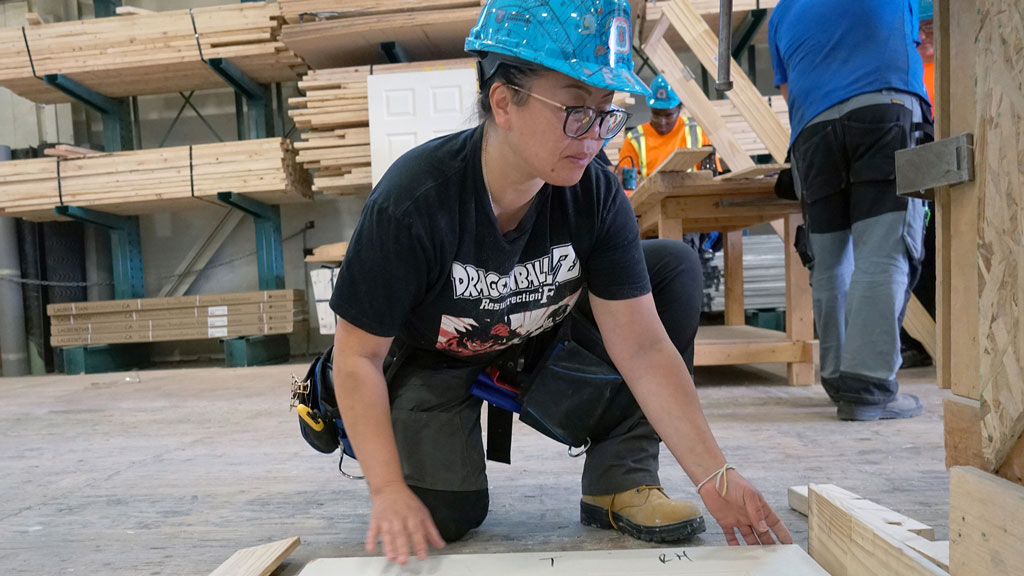A commercial millwork pre-apprenticeship program that includes a job placement guarantee for all of its 40 or so graduates is setting a precedent: it is only for women.
Operated by the College of Carpenters and Allied Trades (CCAT) in Woodbridge, Ont. the program covers the foundations of millwork carpentry where, among other things, the students learn to use the tools of the trade to hang doors, install door locks and make connecting joints for wood trim.
Four weeks of training at the college is followed by a four-week job placement where the women are paid first-term apprentice wages ($23.10/hour plus 10 per cent vacation pay), says Cristina Selva, executive director of the CCAT.
The CCAT chose the millwork sector for the all-women course, funded under Employment and Social Development Canada’s Women Employment Readiness program, because it offers students a soft entry into the trade, unlike other sectors such as formwork and scaffolding.
“You work inside so you don’t have to deal with weather extremes” and there are often fewer safety hazards, points out Pat Weaver, the course’s instructor, who operated a millwork company for about seven years before becoming an instructor at the CCAT.
“We want to set these women up to succeed.”
Selva adds the millwork curriculum was selected because commercial millwork contractors have been voicing concerns over a diminishing pool of labour.
Students who complete the four-week in-class segment are then placed in jobs and can join the union and register as first-year apprentices. If their employer doesn’t retain them, the women will be put into the union’s apprenticeship pool “and we will assist them with new work placements,” she explains.
While there has been much discussion over the past few decades on how to hike the ranks of women in construction, increases have been miniscule. The program aims to get at some of the issues for those past failures.
“It comes with incredibly appropriate supports for women,” Selva points out.
Along with a child care subsidy, students receive a training allowance covering tuition, textbooks and iPads loaded with industry software.
They also receive a $40 per day travel allowance during class and job placements, plus a $700 subsidy for tools and personal protective equipment, she says.
Additional money is available for tutoring and counselling to “help women succeed and stay in this industry.”
Weaver says while the union encourages women to enter the trade today, societal barriers in the past have been deterrents.
“There are more and more great carpenters out there who are women. We need carpenters now and the more success stories that happen, the more inquiries we will get from women interested in entering the field. It just makes sense to run courses like this.”

For student Vicky Saygnasith the course is an “extremely radical” shift from being a nail esthetician and lash artist.
The course is the start in her goal to become a journeyperson.
“I want to learn everything…including how to build a house from the ground up.”
Saygnasith says job stability and the union’s benefit program drew her to the field.
“I have children and I knew I needed work that offers me financial security…helps me take care of my children down the road.”
Like Saygnasith, Kamille Radovan was drawn to the course by the attractive pay and benefits package and the rewards of the work itself.
Never afraid to grab a hammer or saw to do improvements around her home, Radovan had been picking up a few skills from her husband, Jeremy, a carpenter, when she signed up for the millwork course.
“In the class we have worked on baseboards, different ways of connecting joints…hanging doors. It gives me a sense of pride,” says Radovan, adding the teaching team has made the experience enjoyable.
The women’s program is one of several across Canada run through the United Brotherhood of Carpenters and Joiners, Canadian District, says Selva, noting the UBC “is putting a lot of emphasis and resources in the coming years into recruiting and retaining people from non-traditional backgrounds.”
She hopes if the millwork course proves successful, the federal government will continue to work with the UBC on other courses like it.
“I think this model is very flexible and can be easily adapted to any of our key sectors…We could run this type of course for the floor covering trades, or drywall, roofing, siding or any aspect of carpentry in need of workers.”











Recent Comments
comments for this post are closed